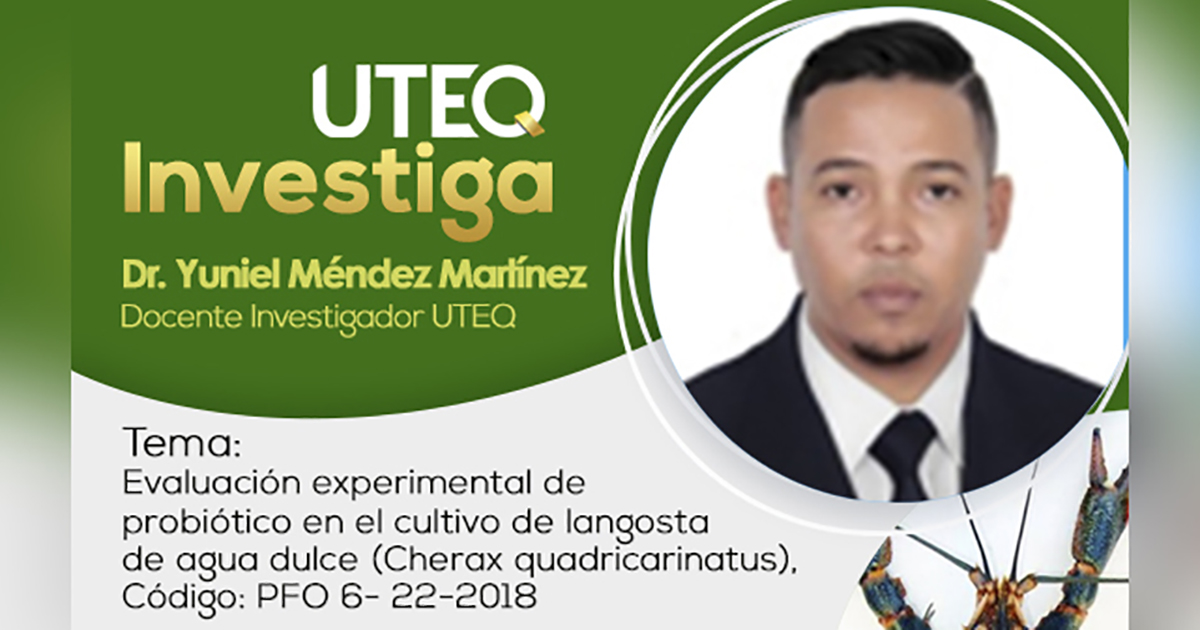Experimental evaluation of probiotics in freshwater lobster culture
Published on 01 from April from 2021

Aquaculture has grown exponentially in the last 50 years, starting from a production of less than 1 million fish. from a production of less than 1 million tons in 1950 to more than 90 million tons worldwide in recent years. million worldwide in recent years.
The main factors influencing the success of this industry is the selection of species with high productive potential, which are rich in protein and a variety of unsaturated fatty acids. One of the aquaculture species with production potential is the lobster (Cherax quadricarinatus), also known in the international market as "redclaw", a freshwater decapod belonging to the family Parastacidae, endemic to northern Australia and southeastern Papua New Guinea.
This species is physiologically robust, has a simple reproductive cycle, gregarious behaviour, rapid growth and high ecological plasticity. Forty to fifty percent of its body is made up of excellent quality meat, maintaining the same taste and texture regardless of the size of the fish.
In other crops of aquaculture interest, large-scale production, where animals are exposed to stress, has seen a marked deterioration in optimal culture conditions, leading to the emergence of diseases that are increasingly difficult to control due to the abuse of antibiotics.
The objective of this research is to evaluate the effect of probiotic mixtures based on different levels of inclusion in the diet of juvenile lobster C. quadricarinatus on the bioproductive and immunochemical response of the species and to determine whether their multiple benefits are recommendable for the production of this species, with a view to further promoting its cultivation in Ecuador by means of an increasingly ecological and attractive contrast for the market.
The research was carried out at the "La María" campus for 60 days. A completely randomised design (CRD) was applied for six treatments (T0 = 0 - control, T1 = 0.10, T2 = 0.20, T3 = 0.30, T4 = 0.40 and T5 = 0.50 mL) with three replicates (experimental tanks) at a density of 20 juveniles/tank. Analysis of variance ANOVA, Tukey's test and Principal Component Analysis were applied.
The results of the bioproductive parameters showed significant difference with better response in T4 in the variables of final weight, final length, weight gain, weight gain and condition factor. In T3 and T4, 83% survival was obtained. In terms of feed conversion rate, feed efficiency and protein efficiency, there were statistically highly significant differences, with the best values being obtained in T3. The hypoxia variable the best responder was T4 with 76.19%, the lowest responder was T0 with 9.56%. Total haemocyte count showed significant differences, with the best treatment being T4 with 11.74 million/mL and the lowest being T0 with 4.39 million/mL. Significant differences were found in the phagocytosis rate, the best treatment was T4 with 38.28%.
Super oxide dismutase enzyme activity responded best at T2 with 41.18 Unit / mL. The Principal Component Analysis allowed to conclude that the treatment dose of 0.40ml of probiotic mixtures improved the bioproductive and immunochemical response of juvenile C. quadricarinatus.

